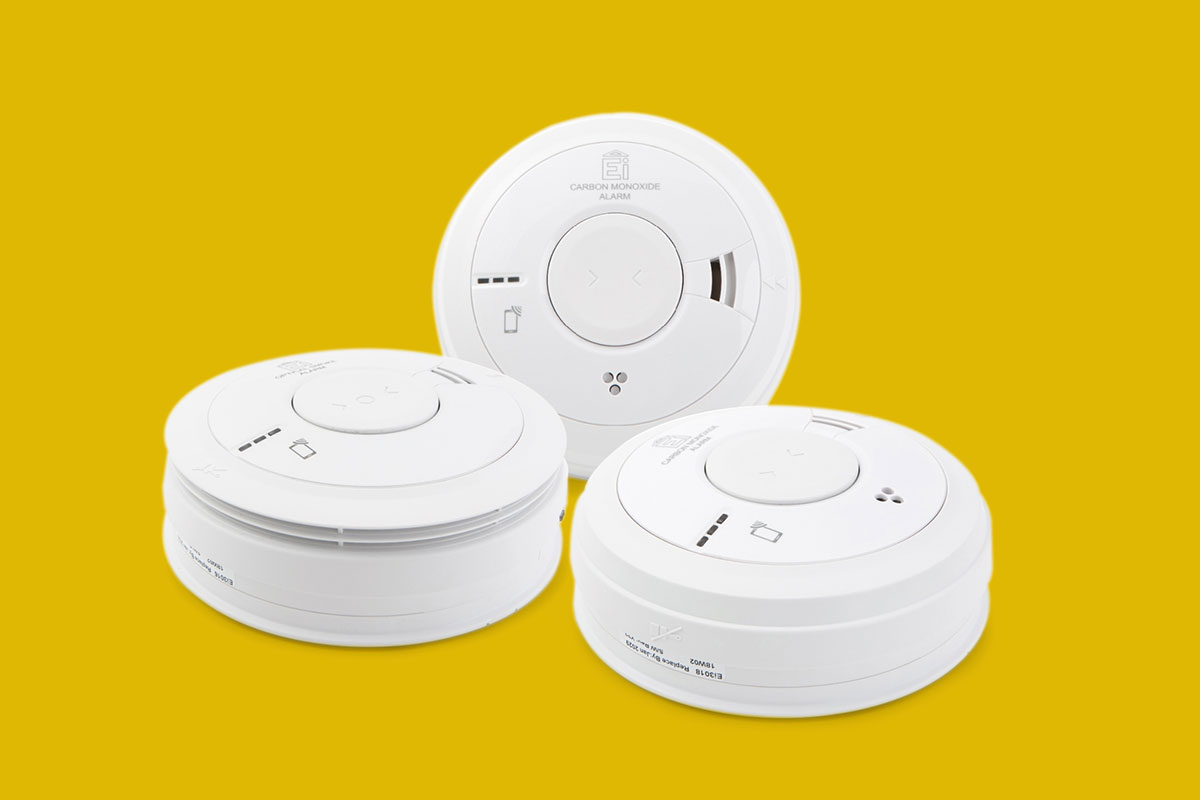What does the new carbon monoxide regulation mean for the sector?
Since last month landlords have to install CO alarms in all housing stock. What does this mean for ensuring residents understand how to use and test alarms in their home? Andy Speake from Aico explains more

In association with:

It is impossible to know how many people are poisoned by carbon monoxide (CO) in the UK. Around 40 fatalities are recorded in England and Wales each year – but the real number is thought to be much higher. That is partly because this killer leaves no tracks. Just half an hour after exposure, all traces of the gas have left the body.
“In many ways, it’s the perfect poison,” says Andy Speake, national technical manager at safety manufacturer Aico. “It’s a gas that cannot be detected by human senses in any way, shape or form. With more obvious dangers within our domestic premises, such as fire, you can see it, you see the devastation, you can see the obvious risk that it poses. But because CO is undetectable by humans, people don’t necessarily understand the dangers. They don’t understand that it is potentially fatal. It is a huge risk.”
Inside Housing sat down with Mr Speake to find out more about this unseen threat – and to ask him what landlords and residents can do to minimise the risks it poses.
Hard-to-spot symptoms
Another reason CO poisoning can be hard to spot is that its symptoms can be indistinguishable from common ailments.
“It’s very flu-like, almost like a hangover,” says Mr Speake. “We’re talking about dizziness and nausea, feeling weak or shaky; with higher exposure, or over a longer length of time, fainting becomes a possibility, and then unconsciousness. And again, depending on the exposure level, if prolonged, it could lead to a fatality.”
Where does it come from?
CO is produced during combustion – and so the most common domestic sources of CO are fuel-burning appliances, Mr Speake explains. “Boilers, fireplaces or multi-fuel stoves – anything like that.”
If fuel can combust fully, there is no issue. The more incomplete the combustion, however, the greater the possibility of CO being given off. “It’s not a problem if the fire has been ventilated correctly, whether through a flue or other means,” says Mr Speake. “The issue comes when it’s in a confined space, where there isn’t sufficient ventilation.”
The source does not even have to be within your property. It can seep through open windows, and even permeate through walls, floors and loft spaces. “We’ve come across cases in the past where a flue has been ventilating straight into a neighbouring window,” he adds.
Another little-known source of CO is large amounts of stored wood pellets – although these are more commonly found in European countries where biomass boilers are more popular. “Due to the chemistry, if these stores aren’t ventilated, then CO can build up over time,” he says.
Who is most at risk?
Certain groups are deemed to be at a higher risk of CO poisoning. “Commonly, that would be vulnerable people,” Mr Speake says. “Older people would absolutely be more at risk because they are more likely to have cardiac or respiratory ailments that would make them more susceptible. Recently, more research has been undertaken by organisations such as CO Research Trust into other vulnerable groups, such as pregnant women. We know CO can have some impact on the foetus as it is absorbed into the bloodstream, but we don’t yet know to what extent.”
He points out, too, that non-fatal exposure to CO can have long-lasting impacts, including effects on mental health, such as memory and learning.
Andy Speake provides technical expertise on fire and CO alarm production and installation at Aico. He chairs multiple industry working groups and is a member of the CENELEC Technical Committee for gas detection.
As a participant on several national and European committees, Mr Speake is involved in standardisation and is the convenor for the working group responsible for BS EN 50292 (apparatus for the detection of CO in domestic premises).
Common misconceptions
CO alarms are affordable and widely available – and thanks to new regulations brought into force this year, landlords are required to install one in any room that contains a fixed combustion device, such as a boiler or wood stove. But as obvious as it may sound, alarms are only useful if we pay attention to them – and with CO, that is not always the case.
“When a fire alarm goes off, it’s very easy to see or hear if there’s a fire, or whether it’s a false nuisance alarm due to burning toast or a lit candle,” says Mr Speake. “With CO, it’s not easy to see straight away. So something Aico is massively advocating against is dismissing CO alarms as nuisance events, by investigating any alarm event thoroughly.”
Thanks to modern CO alarms that send data to the cloud, Mr Speake says Aico has seen this happening in real time; moments after a CO alarm event, some residents have dismissed it as a false alert and removed the device altogether.
“It’s a really important message that CO alarms don’t typically nuisance alarm,” he says. “Their electrochemical cells are incredibly accurate at detecting CO. Whatever the CO alarm event, it should never be dismissed.”
Mr Speake points out that fire alarms and CO alarms make different sounds – a fact that members of the public might not be aware. “So there’s a very strong argument for testing alarms regularly. It’s not a new message; the industry has been campaigning on this for years,” he explains. “It’s about making sure your alarm is functioning, but it’s also about familiarising yourself with the sound of the alarm, too.”
Reducing the risks
We should all be testing our CO alarms at least once a month, he suggests. How do we do this?
As well as installing and testing alarms, it is crucial that landlords ensure that any fuel-burning devices are checked regularly. “It is a requirement for landlords to get boilers regularly serviced at annual intervals,” says Mr Speake. “But there are other appliances within the property, such as gas cookers, and they may not necessarily get serviced as regularly – so make sure they are looked at regularly.”
Keeping flues clean and in good order is important too, he adds, as blocked chimneys can prevent gases like CO from venting into the outside air. “The National Association of Chimney Sweeps is always pushing this message,” Mr Speake says. “It’s really important.”
As well as checking our alarms, it is crucial to replace them in a timely manner. “CO alarms do have a lifespan,” he explains. “For older alarms, it used to be five to seven years; modern alarms tend to last for 10 years. It’s an electrochemical cell – there are liquid elements within there, which is why alarms have a shelf life – and that applies to mains-powered alarms, too.”
Luckily you don’t have to guess when they are about to stop working. “It’s a requirement that alarms have to notify when they’re reaching the end of their life,” says Mr Speake. “Typically they will do that with a periodic chirp, with a different tone from the alarm. Often that will be accompanied by a visual signal, and there should also be clear labelling on the side of the unit.”
We may not be able to detect CO using our senses – but it is still our eyes and ears, coupled with adherence to safety regulations, that will keep us safe from this invisible and deadly menace.









